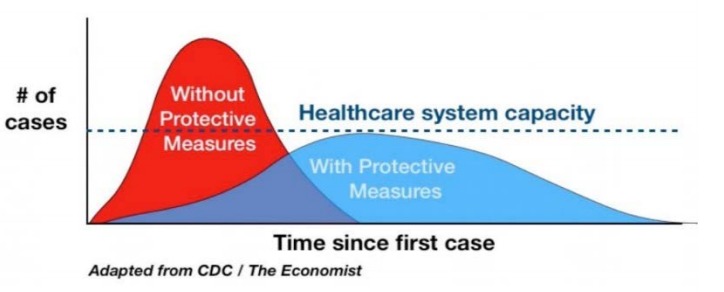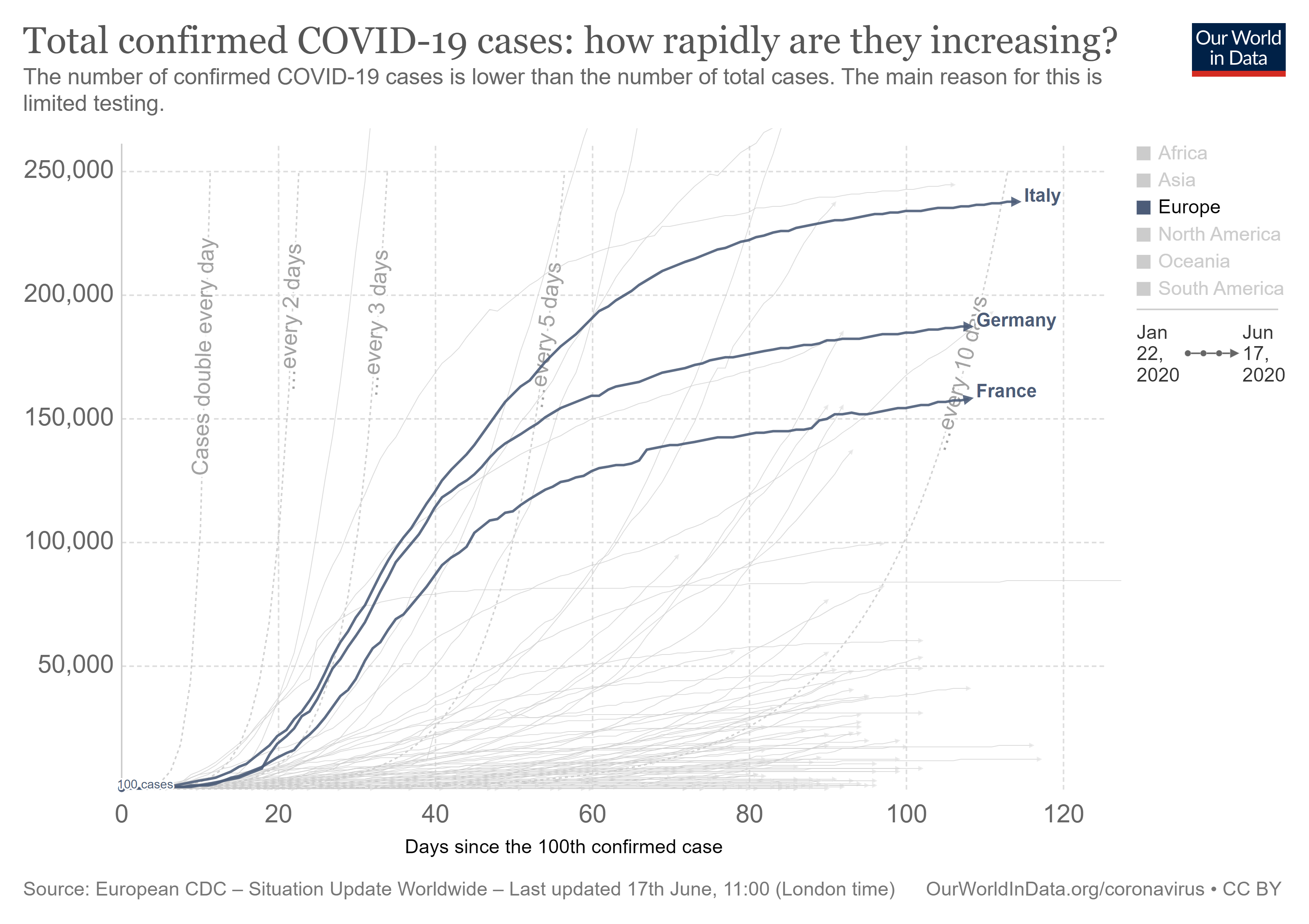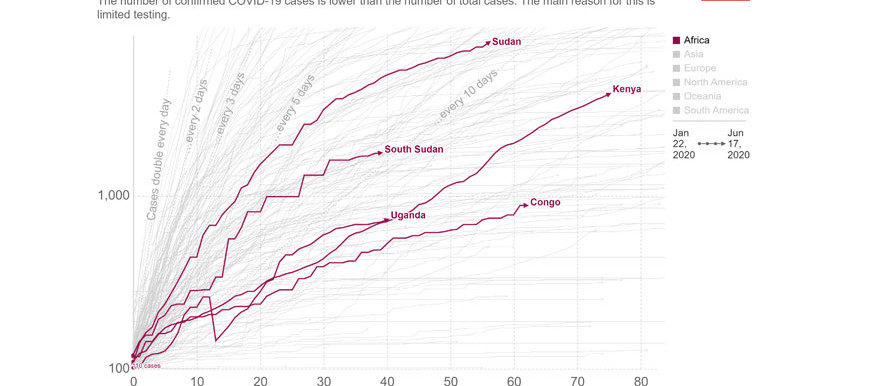It is not easy to just ignore the rate at which the virus is spreading in South Sudan, and neighboring countries like Sudan, Kenya, Uganda, and Congo, which are also recording troublesome trends.
What is flattening the curve?
When governments take harsh measures like lockdowns, closures and isolations, it’s part of what’s called ‘flattening the curve.’
Since the virus spreads between people very quickly, without any measures, the curve on the graph of cases would be very steep. Every day, more and more people would get sick. A flatter curve is created by a more gradual increase in the number of cases per day and a more gradual decrease.
 Source: World Health Organisation
Source: World Health Organisation
"Over a long period, the number of people infected might be around the same, but the difference is the number of cases that occur each day,” according to the World Health Organization. “The way we flatten the curve, is by slowing down transmission of COVID-19.”
Governments set rules like lockdowns, closures, contact tracing, and travel restrictions to slow down transmission. When the public adhere to these directives it helps health institutions better manage the spread of the virus and make sure that hospital capacities are not overwhelmed.
Countries that have been hit hard by the pandemic like Spain,Italy and Germany have begun to flatten the curve after the government put out measures that controlled the movement of people, encouraged social distancing, and did effective contact tracing.

How does testing affect the curve?
Radio Tamazuj was unable to confirm the total number of tests conducted in South Sudan. While on a daily basis the government sometimes releases test numbers, there isn’t a comprehensive picture of whether all sick or suspected cases are being tested.
And just because someone who is sick doesn’t get tested doesn’t mean they don’t have the virus. Countries that have conducted mass testing have often recorded more positive cases, making it easier to measure their situation and better combat and control the spread of the virus.
According to Our World in Data, a website that’s collecting case and testing data from around the world, “some countries (are) doing ten or (a) hundred times fewer tests than other countries with a similar number of new confirmed cases.”
Some people Radio Tamazuj has interviewed who are sick with Covid-19 say they were in contact with their families while sick, but those family members have not always been tested by authorities. This could mean that despite the government saying it’s doing comprehensive contact tracing, the reality is different.
Look for part 3 on health care services coming soon…




